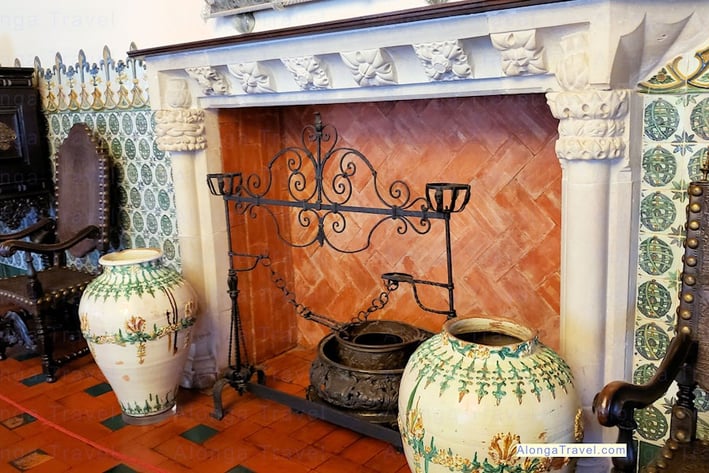Mudejar Architecture in Simple Terms: Key Features & Examples
Mudejar architecture is a fun style that emerged in the Iberian Peninsula after the Reconquista, a blend of the beauty of Islamic and Christian elements. It originated during medieval times (11th-15th century) and has recently experienced a revival in the form of Neo-Mudejar style.
In this post, you can see pictures and a video of some iconic Mudejar Spanish and Portuguese architecture. And to help you understand what you are looking at, I explain key features of the Mudejar style architecture.
You don't need to be an architect to enjoy Mudejar architecture, but having some knowledge about this style can make your experience even more enjoyable, when you look at Mudejar style buildings.


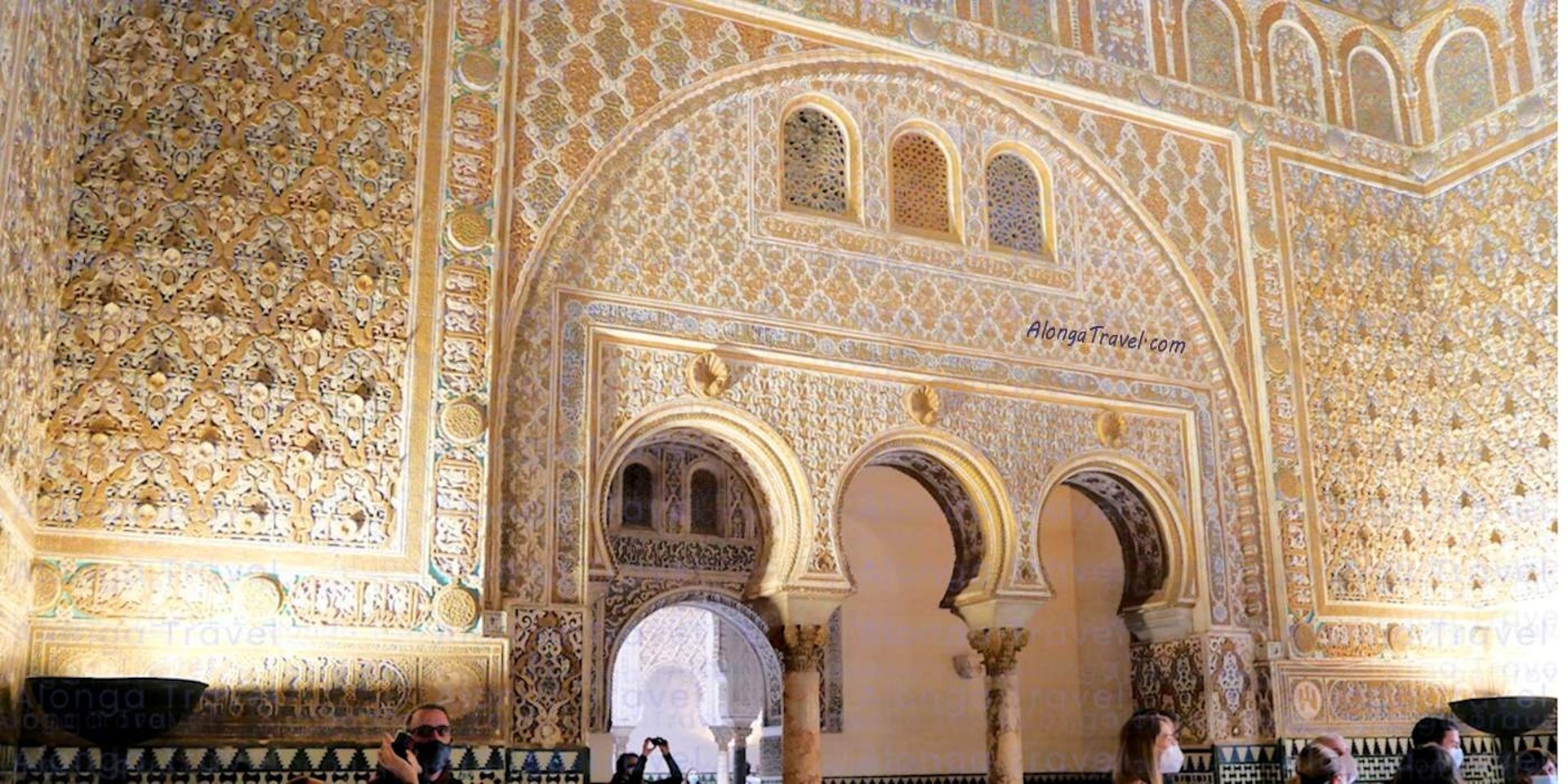
Topics:
Video of Chapel of Sant Bartholomew
Characteristics of Mudéjar architecture
Decorative Elements of Mudejar style
Structural elements in Mudejar architecture:
Distinct style of building materials
Contribution of Jewish culture to Mudejar style
Examples of famous buildings in the Mudejar architecture
Mudéjar style around the world
Highlights of Mudejar ARCHITECTURE
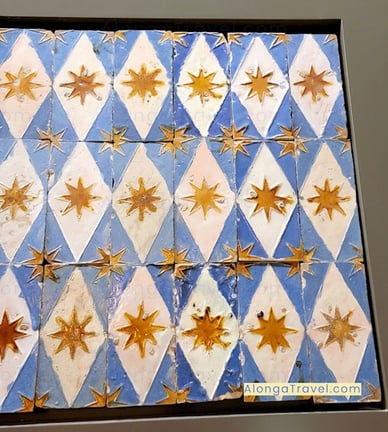

Cool arabesque patterns!
Horseshoe shaped, lavishly decorated archways and domes!
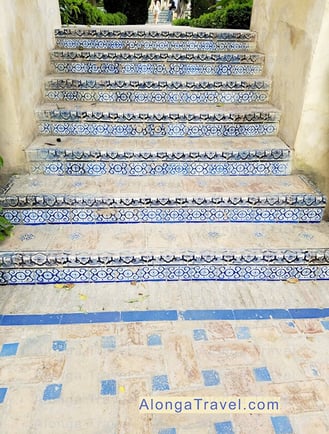

Fun tiles!
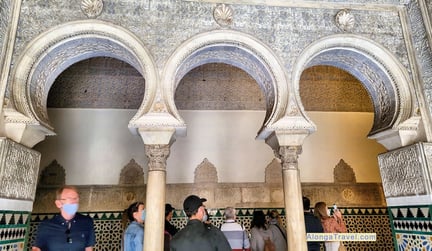

The Chapel of Saint Bartholomew in Cordoba, Spain, is a fine example of Mudejar style architecture in Andalusia, Spain. Follow the link to a comprehensive post about this church to better understand its beauty.
I took this video when I visited Cordoba, Spain with the main purpose of seeing this chapel.
What is Mudejar style
What is Mudejar style of architecture?
Mudéjar is the name given to the unique style of old architecture developed in the Iberian Peninsula after the Reconquista.
It combines Islamic decorations and Christian architecture. It even has some Jewish influence reflecting the rich cultural history of the region, with Synagogue of Santa María la Blanca as the best example.
Let's clear up some definitions about the origin of the term Mudéjar.
What is the origin of the Mudéjar?
The term "Mudéjar" [moo-the-hah-r] comes from the Arabic word mudajjan. It means "those who are allowed to stay"—a reference to the Muslim people who were allowed to remain in the Iberian Peninsula Christian territory under Christian rule, but didn't convert to Christianity.
Read on for more details, and later read the detailed account of Muslim life in Spain, covering the period from the fall of Seville to the Christian reconquest in Harvey book 'Islamic Spain, 1250 to 1500'.
Where the term Mudejar art come from?
The term Mudejar art was created by an art historian named José Amador de los Ríos y Serrano.
Historical context of Mudéjar art
Mudejar style architecture appeared during a period of cultural exchange between the Moorish Muslim rulers in Al-Andalus and the Christian rule settlers who had conquered much of the region by the late 11th century.
The last Muslim state in the peninsula was the Emirate of Granada, which was located in the southern Spain and fell to the Catholic Monarchs in 1492.
Gifted Islamic craftsmen continued their traditions working with decorative Islamic art motifs and patterns, but they started to apply them to traditional Christian architecture.
This exchange created a a distinct new style: a unique blend of architectural styles, with features of both Islamic architecture and Christian architecture together, that became known as Mudéjar style during the Middle Ages.
Mudejar architecture has most likely started in Toledo, taking after Mozarabic architecture that appeared around 7th century, then became popular around Aragon and Andalucia, but then spread to the rest of the Iberian Peninsula to the neighboring Portugal.
The Mudéjar style since then has been influential in many areas around the world, particularly in Latin America, where it was adopted by settlers from Spain during colonial times.
It has also been adapted into modern Islamic architecture in countries such as Morocco, Tunisia, and Turkey, making it a truly global influence.
Let’s see what characteristics define Mudejar architecture.




Combination of Islamic and Christian Styles of Architecture
Mudejar style was used as a way to integrate the two cultures, Islamic culture and Christian culture, and it features elements from both in unique ways.
You can see intricate geometric patterns, arabesques, carved intricate calligraphy inscriptions and star shapes. These elements reflect the influence of Islamic architecture.
At the same time, architectural features such as columns, domes, and arches have been used in Christian architectural styles.
Budlings materials used in Mudejar architecture were also a mix of both traditions.
This blend of two styles has created a distinct new style - Mudéjar.
Christian architectural styles that influenced Mudejar architecture
The Christian architectural styles that influenced Mudejar architecture include:
Gothic
Renaissance
Baroque
You can learn how these Christian architectural styles have influenced Mudejar style following this link or scrolling to the bottom of this post.
Decorative Elements of Mudejar ARCHITECTURE
There are some distinctive decorative elements in architecture built in Mudejar style, such as quatrefoils, star patterns, Kufic inscriptions, muqarnas, arabesques and ornate tiles on walls and ceilings.
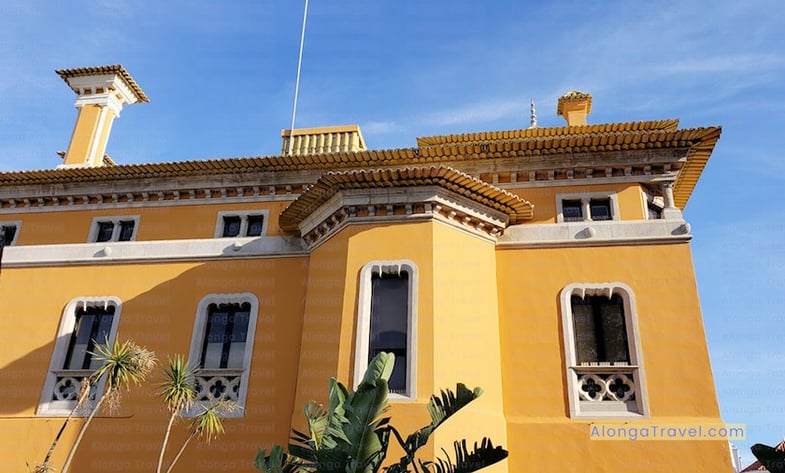

Quatrefoils
Quatrefoils (four-petaled flowers) are geometric designs that feature four lobes or petals arranged into a symmetrical star-like shape.
Often seen as an ornamental motif on both the interior and exterior of buildings, quatrefoils can be found on walls, ceilings, doors or other architectural features.
The quatrefoils have originated from Islamic art and design and then adapted by Christian architects working in Mudéjar style during the Middle Ages.
A typical example of quatrefoils decorative element of Mudejar architecture




Fun and happy arabesque pattern on the wall in Alhambra, Spain. It was so beautiful I took a rare selfie to save the moment of happiness from seeing that room.
Here is one of the Mudejar style element - arabesque pattern on Alcazar de Real in Spain. I loved it because it's so old and authentic!


Latticework
Latticework is a type of decorative feature often seen in Mudéjar style buildings, mostly on the windows and door frames.
Latticework is elaborate metal or wood carving interlocked to form geometric shapes. These shapes: stars, circles, squares and triangles add an extra layer of detail to the building's interior or exterior.
This creates latticework that not only astounding, but long lasting.
We all can just admire what the Islamic craftsmen of Andalusia created in 13th through 16th centuries, and the current Spanish and Portuguese's Governments preserves!
This one of the reasons European destinations are so popular! They have timeless art to admire!


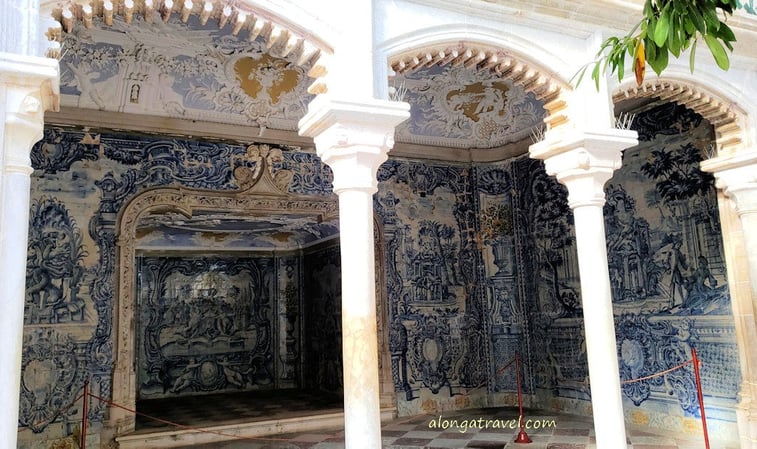

Here is another beautiful example of an Mudejar style elaborate woodwork over an archway
Here is an example of a Mudejar elaborate woodwork over an archway in Alcazar de Real in Sevilla
Use of distinctive building materials.
Mudéjar architecture has its own distinct style of building materials.
Mudéjar buildings are often constructed with brick walls, covered with stucco or plaster. There is also ornate tile work to create intricate patterns and designs that can be seen on walls, ceilings, vaults, and other architectural elements.
This combination of building materials creates this distinctive style, typical of Mudejar style.
Mudejar tiles
The tiles used in Mudejar architecture are typically made of glazed ceramic and are often brightly colored.
They are used to decorate walls, floors, and ceilings, and are arranged in intricate patterns and designs. The patterns often include geometric shapes, floral motifs, and calligraphy, and are arranged in a way that creates a sense of harmony and balance.


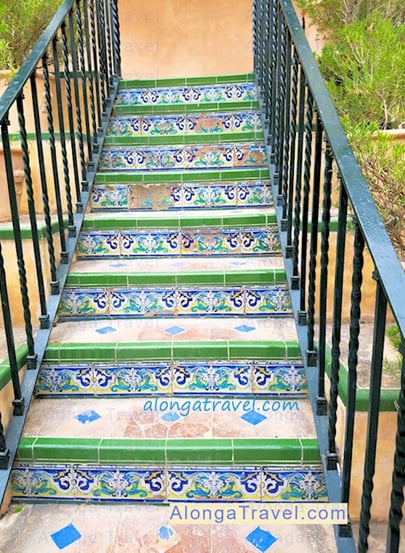

Looks at the staircases. Aren't they fun?! :)
Mudéjar style plaster
Mudejar architecture in medieval Spain and Portugal is famous for its use of Mudéjar style plaster.
This decorative plasterwork is known for its intricate patterns and carvings inspired by Islamic art. It is made by combining sand, limestone, gypsum powder, and water, which are then spread on walls or ceilings and carved into beautiful designs.
The plaster can also be enhanced with vibrant colors by adding different pigments.
Mudejar style plaster is versatile and widely used in modern architecture for both interior and exterior decoration. It adds elegance and charm to homes, hotels, and other buildings.
The unique combination of materials and decorative elements gives Mudéjar architecture its distinct appearance.
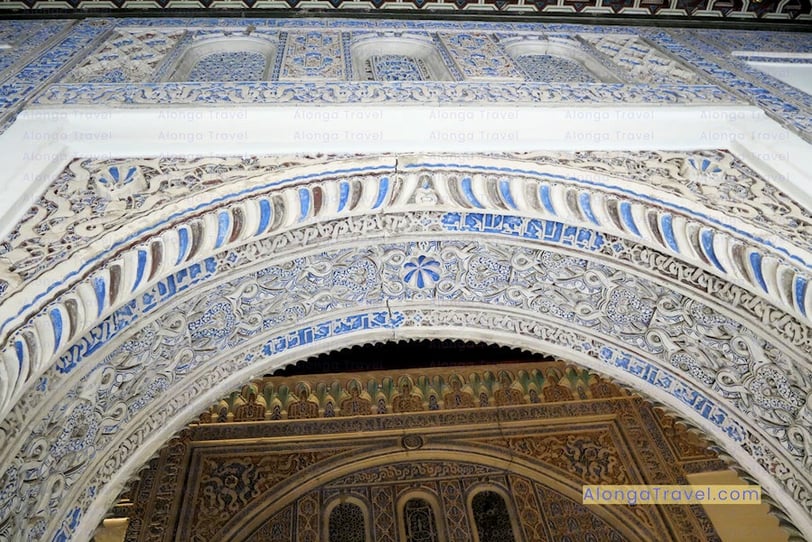

A great example of a distinctive element - Mudejar style plaster on this archway in Royal Alcazar. Notice the infusion of blue and brown pigment in the plaster.
Arches
Arches are a fundamental element of Mudéjar architecture; they are both decorative features and structural elements.
These arches create an open and airy feel that helps to bring light into the building and provides a sense of space.
Using multiple arches also allows for complex designs and inner courtyards, commonly found in Mudéjar buildings.
Horseshoe arch
Horseshoe arch is one of the typical arches in Mudejar style of architecture.
The horseshoe arch, also known as the Moorish arch and the keyhole arch, is a specific type of arch. It has a curved shape like a horseshoe and extends downwards beyond the flat line of its diameter. This means that the bottom opening of the arch is narrower than its full width.


Fun looking entrance horseshoe arch in Cordoba, Spain


Vaults
Vaults are another important element of Mudéjar architecture.
A vault is an arch-shaped structure that is used to span a space and provide support for the roof or ceiling of a building. They can often be seen on ceilings or walls, creating shapes that add depth to the design.
The vaults themselves can be constructed using different material like stone, steel, or other materials. They also provide stability while keeping the space open and airy.
Vaults are commonly seen in Mudéjar architecture as they help to keep the unique aesthetic of an Islamic-influenced building, while helping support large open spaces - domes.
Watch the video at the beginning of this post about Sant Bartholomew Chapel to see the best example of Mudejar vaults both on the ceiling and the wall.
This beautiful Mudejar vault is from Saint Bartholomew Chapel in Cordoba (featured on my video above)
Domes in Mudejar architecture
Domes were an important feature of Mudéjar architecture.
Domes are semi-circular or polygonal structures that provide strength and stability to a building, while at the same time creating an impressive aesthetic when adorned with decorative motifs.
Use of intricate wood carved work in domes made them a key element of the Mudéjar style.
A fine example of the Mudejar dome - the dome in Sintra National Palace.


Contribution of Jewish culture to Mudejar style
Do you know that besides being a blend of both Islamic and Christian cultural features together, Mudéjar style of architecture has also some Jewish influences?
That happened because of the Spanish diverse population back in medieval times that were all living and building, and creating peacefully together.
Read more about contribution of Jewish culture to Mudejar architecture in my other post.
This rich cultural exchange helped shape the Mudéjar style of architecture and made it a unique symbol of Spain's multicultural heritage and Spanish architecture.
Alhambra Palace in Granada, Spain
The Alhambra Palace in Granada, Spain, built in the 13th century by Muslim rulers is a famous example of Mudéjar architecture.
The palace is covered in intricate tile-work on the walls and floors, with a particularly stunning wood-covered Mudejar ceiling.
The Royal Chapel in Granada, Spain
Another example of Mudéjar architecture in Granada is the Royal Chapel, built in 1536. The chapel features a beautiful dome with intricate carvings and colorful tiles.


Examples of Mudejar architecture Seville
A few of the most iconic examples of Mudéjar architecture are found in Seville, Spain.
The ceiling in the Alcazar de Real in Seville, Spain (above) is the best example. It has symbols and motifs, quatrefoils, stars, latticework and Arabesque patterns that draw inspiration from traditional Islamic art.
The rest of Alcazar de Real in Seville has many amazing examples of Mudejar (and other) architectures, especially The Palace of Pedro I - the heart of the Alcázar of Seville, and deserves a separate post.
Giralda bell tower in Seville, Spain
Casa de Pilatos in Seville, Spain
Mudéjar Pavilion in Maria Luisa Park, Seville, Spain (below).
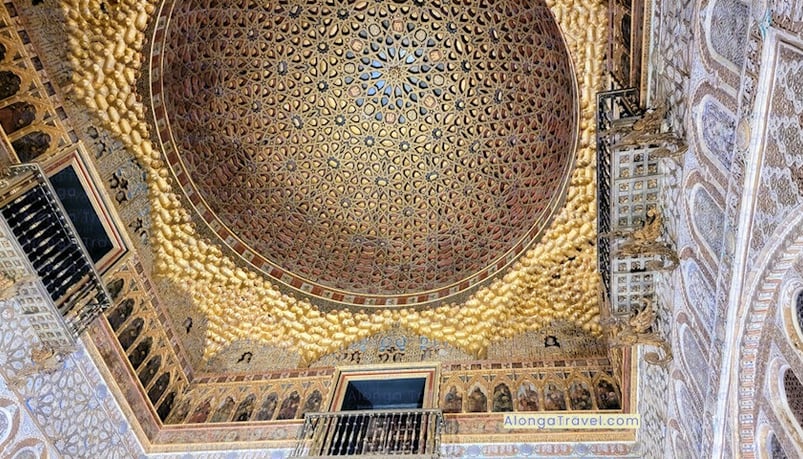

Toledo, Spain has many great examples of buildings and churches in Mudejar style and deserves a separate post.
Here is the the Iglesia de San Bartolomé in Toledo, and the Church of San Roman. Toledo has many other examples.
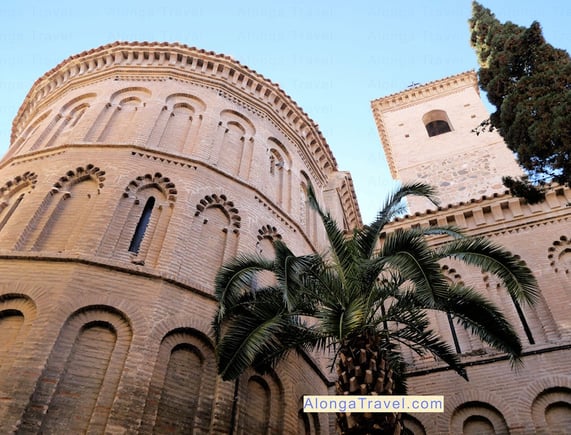

Jeronimos monastery in Lisbon, Spain
The Jeronimos Monastery in Lisbon, Spain is usually categorized as an example of Manueline stile. But it also has some examples of Mudejar architecture, like vaulted ceiling and intricate stonework.
There are many examples of Mudejar architecture in Spain and Portugal in diffferent cities.
Here is a list of a few cities, with their best examples of Mudejar architecture.
Teruel, Spain:
- Cathedral of Santa María de Mediavilla in Teruel, Spain or Teruel Cathedral. This Cathedral is the world heritage site. It's tower, the dome and the roof are well preserved Medieval structures in Mudejar style and are decorated with Aragonese Mudéjar art.
- Tower and church of San Pedro in Teruel, Spain
- Church tower of San Martín in Teruel, Spain
- Church of San Miguel
Aragon, Spain:
There are several 12th century mudejar buildings in Aragon, Spain, that reflect the artistic and cultural fusion of Islamic and European influences. I have another post about Aragonese Mudejar buildings.
Valladolid:
- Church of San Pablo
Valencia:
- Church of San Nicolas
- Palace of the Marquis of Dos Aguas
Salamanca:
- Church of San Esteban
Viso del Marques:
- Palace of the Marquis of Santa Cruz
Guimarães:
- Palace of the Dukes of Braganza
Barcelos:
- Palace of the Counts of Barcelos
Ourém:
- Palace of the Counts of Ourém
Redondo:
- Palace of the Counts of Redondo
Celorico de Basto:
- Palace of the Counts of Basto
Vimioso:
- Palace of the Counts of Vimioso
Serpa:
- Palace of the Counts of Ficalho
Alcáçovas:
- Palace of the Counts of Alcáçovas
Avintes:
- Palace of the Counts of Avintes
Vila Flor:
- Palace of the Counts of Vila Flor
Castro Daire:
- Palace of the Counts of Castro
Almada:
- Palace of the Counts of Almada
Penafiel:
- Palace of the Counts of Penafiel
Alvor:
- Palace of the Counts of Alvor
Sintra, Portugal:
-Sintra National Palace.
Cities where you can see great examples of Mudéjar
Neo-Mudéjar
What is the meaning of Neo-Mudéjar?
Neo-Mudéjar is a contemporary interpretation of Mudéjar art styles that were prevalent in Spain and Portugal during the late 19th and early 20th centuries. This artistic style incorporates traditional Mudéjar elements like arches, tiling, and brickwork, alongside modern materials such as cast iron and glass.
As this style has been gaining popularity in the region, some Spanish architectural companies have taken these designs to the Arabic-speaking countries of Morocco, Algeria, and Eastern Arabia.
As well as impacting architecture from the West to the East, Mudéjar characteristics have been influencing modernizing styles across many different countries.
Muslim architects are embracing technical advances while also keeping true to their aesthetic expertise reminiscent of Mudéjar styles and art. It's inspiring how they stay true to traditional forms while at the same time innovating new designs that continue to be sought after both locally and worldwide.


Mudéjar style around the world
Mudéjar style has spread globally over centuries, influencing various architectural styles, like the 19th century Neo-Mudéjar style.
In Latin America, Mudéjar architecture is prominent in colonial cities like Mexico and Peru, featuring bright colors, geometric patterns, and intricate details.
In the Middle East, modern materials like steel and glass have been incorporated into Mudéjar styles while maintaining traditional decorative motifs.
It is an important part of Spanish architectural history and has influenced architecture worldwide, therefore it's crucial to preserve Mudéjar buildings for their beauty and historical significance.
When visiting regions with Mudéjar architecture, take time to admire this wonderful architecture, knowing many things about it now.
Let's connect on social media; the links are in the footer. Visit my page with other European destinations on Alonga travel.

















